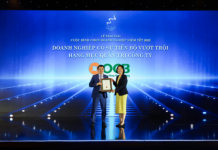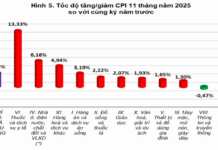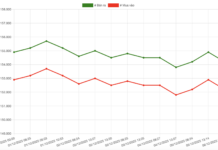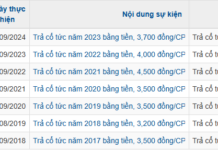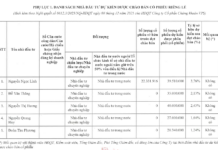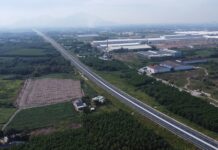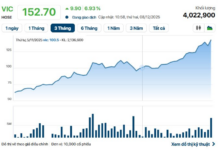Speaking at the seminar “Digital Transformation towards Smart Manufacturing: Opportunities for Vietnamese Enterprises”, Mr. Tran Kien Dung, ILO expert and Director of ProfM Vietnam Co., Ltd., shared that many businesses have successfully digitally transformed, but there are also numerous failures.
Among those who failed, 80% made hasty decisions without a well-thought-out strategy and roadmap. In addition to strategic missteps, internal capabilities, technology, human resources, and financial constraints played a significant role in their downfall.
DIGITALIZATION IS STILL CONSIDERED A FAR-FETCHED CONCEPT BY MANY
For a successful digital transformation, technological solutions must be appropriate, and it is important to remember that no entity can undergo this process without financial investment. People remain the most valuable asset to a business, and having skilled, dedicated, and digitally literate employees is crucial for a successful transformation, as Mr. Dung emphasized.
When asked if Vietnamese enterprises are ready to embrace digital transformation towards smart manufacturing, Mr. Dung shared a true story from his experience working with a company. He suggested they embark on a digital journey, but they felt it wasn’t the right fit for them at the time.

“From my perspective, we may need to reconsider what we mean by digital transformation. For a business that has been managing things manually and traditionally, immediately adopting digital devices without a solid management foundation and skilled personnel is indeed inappropriate,” said Mr. Dung.
Many still believe that digitalization entails transforming the entire business model, which involves introducing new production methods and customer experiences. However, this demands substantial and long-term investment.
In reality, digital transformation is a journey that can start with data digitalization. This is followed by the digitalization of production, management, and operational processes, and only then should one consider altering the business model. We can embark on this path immediately.
Nonetheless, according to Mr. Dung, the biggest challenge for Vietnamese businesses is their mindset. They envision digitalization, especially in manufacturing, as a distant concept, involving fully automated factories with little to no human presence. This is a fanciful idea.
In reality, many progressive Vietnamese businesses have successfully transformed. Those who lag behind will find themselves at a significant disadvantage, like a warrior entering a battlefield with only a dagger or sword against an army equipped with modern weapons. The outcome of such a battle is predictable.
“Therefore, Vietnamese businesses need to rethink their strategies. While caution is advisable, they should also embrace the path of digital transformation without delay,” advised Mr. Dung.
PROVIDING “FISH” OR “FISHING RODS”
Mr. Dung agreed that digital transformation is inevitable, but he emphasized that those who act quickly will have a higher chance of success. In the past, it was a matter of “big fish eating small fish,” but in today’s VUCA world (volatile, uncertain, complex, and ambiguous), a fast fish can outpace a slow one, and even a small step ahead can create a significant competitive advantage.
Therefore, he advised businesses to immediately consider the path of digital transformation and identify their starting point. Enterprises must envision their future in the industry they operate in. They should study successful companies and understand their methods, successes, and failures.
After gaining a comprehensive understanding, they can develop strategies and set goals and solutions for each phase. Only then should they take the first steps.
Along with business boldness, policy mechanisms play a pivotal role in catalyzing digital transformation. According to Mr. Dung, the Ministry of Industry and Trade’s programs to support industrial development have yielded numerous benefits for the business community.
However, it is worth considering whether we should provide “fish” or “fishing rods.” The best solutions are those that offer guidance, orientation, and training to businesses.
Furthermore, support activities tend to be scattered among enterprises, and we lack a platform that centralizes these efforts. This platform would allow everyone to learn from each other’s successes and failures and draw valuable lessons. Therefore, we need mechanisms and policies that encourage businesses to engage in these activities.
“If there was an entity, perhaps an association, that brought businesses together, the impact would be immense, and all parties involved would benefit,” emphasized Mr. Dung.
The Innovative Tech Initiative by NCB Wins at Data for Life 2024 Competition
On November 27, NCB Bank’s solution, “A Cloud-Based Machine Learning Deployment Platform,” emerged as the runner-up at the Data for Life 2024 competition. This achievement is a testament to the solution’s profound foundational strength and extensive applicability across diverse social spheres. Out of nearly 380 domestic and international teams, NCB Bank’s proposal stood out, showcasing the bank’s innovation and commitment to leveraging cutting-edge technology for societal impact.
“NCB Bank Wins Big at the Data for Life 2024 Competition with its Innovative Big Data and AI Solution”
On November 27, NCB Bank’s solution, “A Cloud-based Machine Learning Deployment Platform,” emerged as the runner-up at the Data for Life 2024 competition. This achievement was a testament to the solution’s profound foundational strength and extensive applicability across various societal sectors, outperforming nearly 380 domestic and international teams.
Unleashing the Potential: Bolster Domestic Market Growth and Stimulate Consumer Demand
Prime Minister Pham Minh Chinh has signed Dispatch No. 121/CD-TTg, dated November 26, 2024, on continuing to boost domestic market development and stimulating consumer demand.
‘Leaping into a New Era’: Ho Chi Minh City Aims for a Per Capita Income of $13,000 per Year
To enter a new era, Ho Chi Minh City needs to quantify and select the most important indicators. In particular, the city must achieve an average income of approximately $13,000 per capita per year in the next five years to meet the standards of developed countries. This ambitious goal sets a challenging yet achievable target for Vietnam’s economic hub, reflecting a commitment to progress and a desire to elevate the city’s standing on a global scale.







